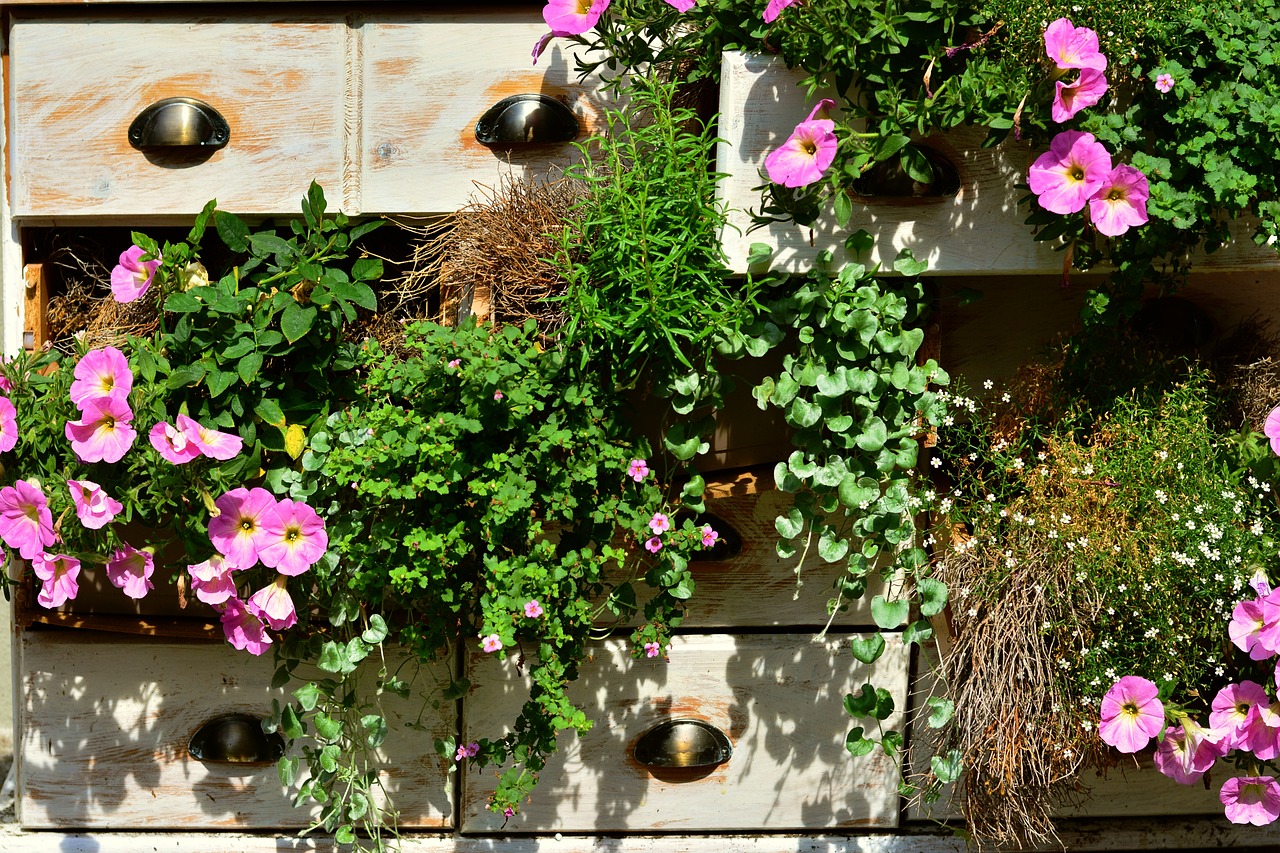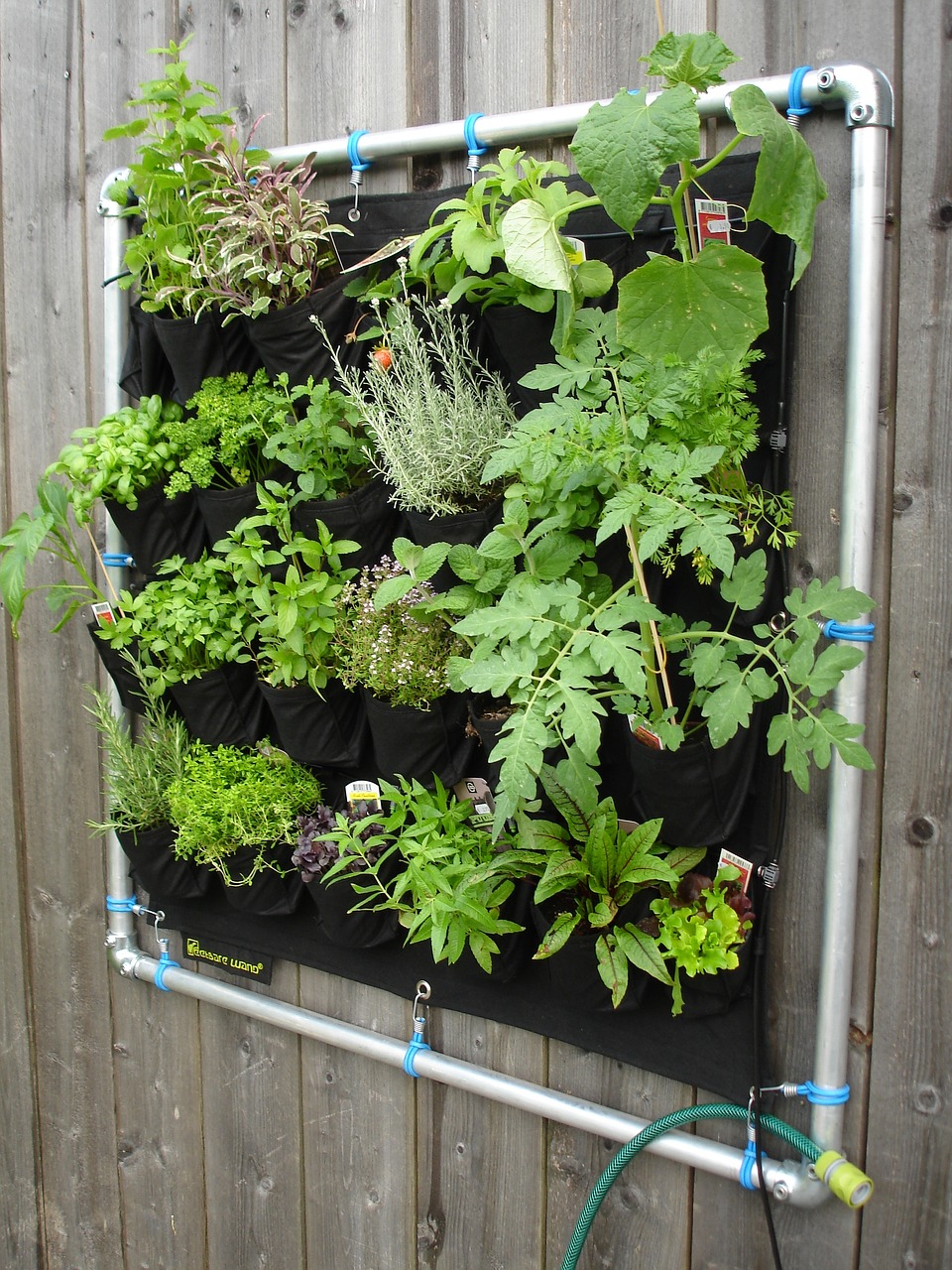If you don’t have much space for a garden in your home, vertical gardens are the perfect alternative.
A vertical garden lets you grow herbs, fruits and vegetables by taking full advantage of upward space. Walls, gates or fences can become lush, green gardens, which will grow food and brighten your home at the same time.
Download eBook: How to Grow Your Own Urban Vegetable Garden

Helpful guide to install a vertical garden
Building a vertical garden may seem difficult, but it doesn’t have to be. All you need is a vertical surface and a little imagination!
1. Choose a surface
The best advantage of vertical gardens is that they need very little space. Any vertical surface at home will work, just as long as it receives sunlight for a few hours every day. Also make sure there is enough space to distribute the seeds or seedlings you want to plant.
2. The plants you choose will depend on the surface you’ve chosen and how much sunlight it gets
If your vertical garden sits in partial shade, try growing an herb garden – basil, mint, parsley and coriander all enjoy dappled sunlight – or leafy greens like lettuce, kale and spinach. If your green wall soaks in full sunshine, strawberries and cherry tomatoes will thrive.
3. Fix a frame to your surface
After you’ve chosen your surface, you need to attach a frame to it. You can buy vertical garden frames from most hardware and garden stores, or you can simply build one yourself.
4. Start planting!
Once your frame is attached to your vertical surface, you can plant and water your seedlings, and enjoy your new garden. Easy!

Further tips:
Choose seasonal plants
Some crops are seasonal and blossom only once a year, others may be more resilient and fruit all year round. Be sure to buy seeds and plants based on the season in which you will grow them. For more information about how to grow a seasonal garden – including a detailed guide about when to plant and harvest your crops – download our free eBook, How to grow your own urban vegetable garden.
Use recyclables
Recycled household items can be great pots and containers for your plants.
You can even use plastic bottles! Two litre bottles, cut in half, make excellent pots. You can also create a hanging garden using plastic bottles. Simply cut a rectangle, wide enough for your seedlings to grow, on the side of a plastic bottle. Poke small holes on the other side using a needle or skewer to create holes for drainage. Line the bottle with a thin layer of cardboard, fill it with potting soil and plant your seedings. Then string your bottle to a high surface, such as a beam, joist or rafter, and – voilà! – you have a vertical hanging garden.
Set up an irrigation system
A good irrigation system will ensure your plants have healthy growth on their vertical surface, especially if they are exposed to direct sun and wind.
A gravity drip is one of the most common methods for vertical gardens. This method involves watering the top row of pots, which gradually feeds water onto the plants below, either by hand watering or by installing a drip water system. This home gardening method is perfect for water conservation.
When should I water my garden?
The best time to water your garden is early in the morning, or in the evening. This helps the soil retain moisture. If you water during the middle of a warm or hot day, the moisture may evaporate too quickly.

Grow your own urban vegetable garden
Download our free eBook and learn the simple steps to create your own little green patch and enjoy the delicious harvest.
Download guide